Welcome to the delicious world of Italian artisan bread, also known as pagnotta! This type of bread, with its distinct crusty exterior and soft, airy interior, is a staple in Italian households. It draws its roots from centuries-old baking techniques brimming with rustic charm and an unbeatable taste.
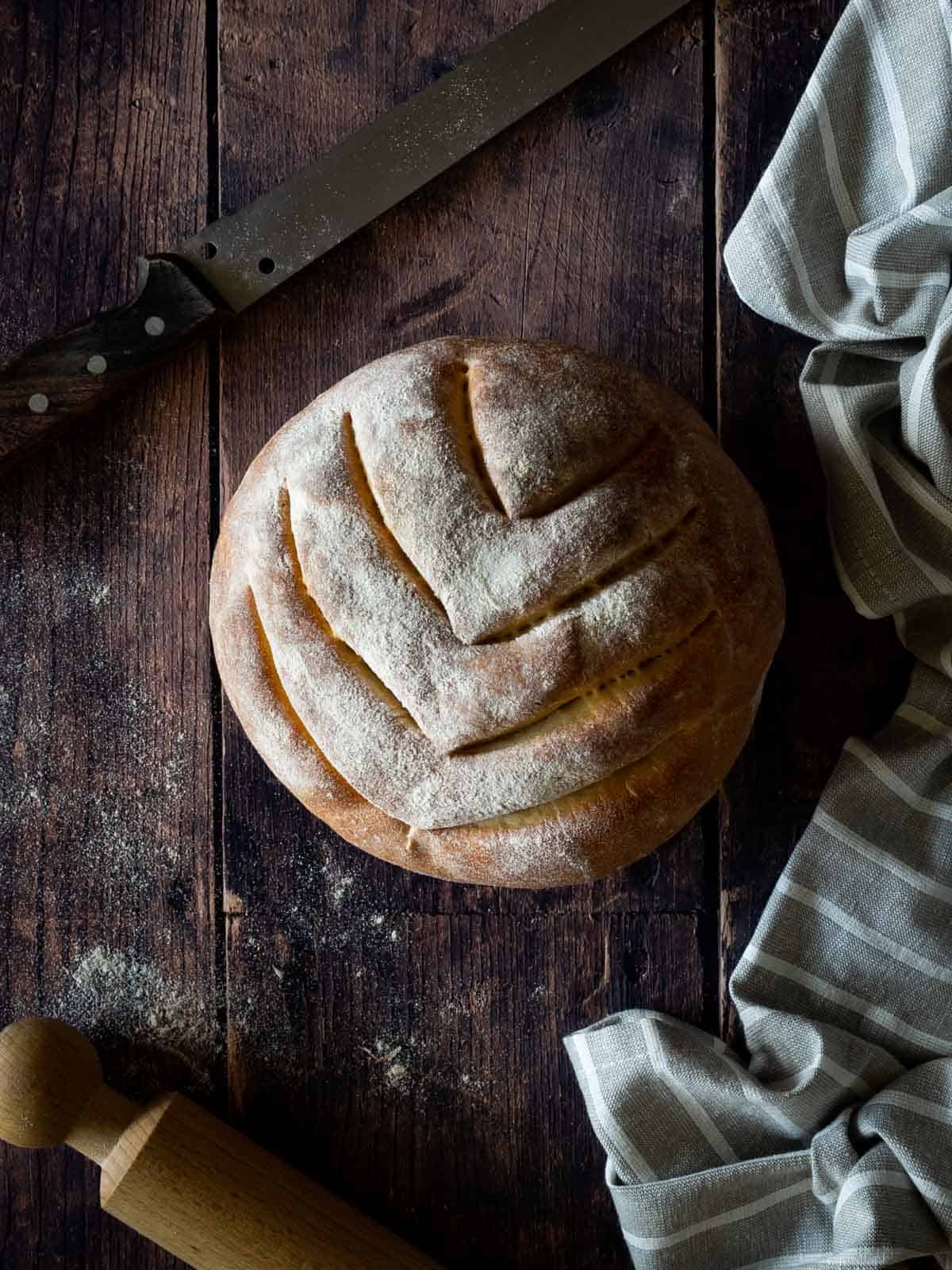
About a year ago, we stopped buying bread because this rustic peasant loaf is easy to make, cheap, and healthier. It makes the house smell like heaven.
Also, we are conscious about consuming as few simple carbs as possible. We agreed on two rules: if we have bread, it has to be memorable and homemade; this way, we control what goes in it.
Second, as this recipe takes a couple of hours to make, we have to plan; it is not merely a result of a simple carbs craving.
Jump to:
🤔 What is Pagnotta bread
This Italian round country bread is a mild sourdough loaf with a light brown crust. It is not too dense and great for making bruschettas and sandwiches.
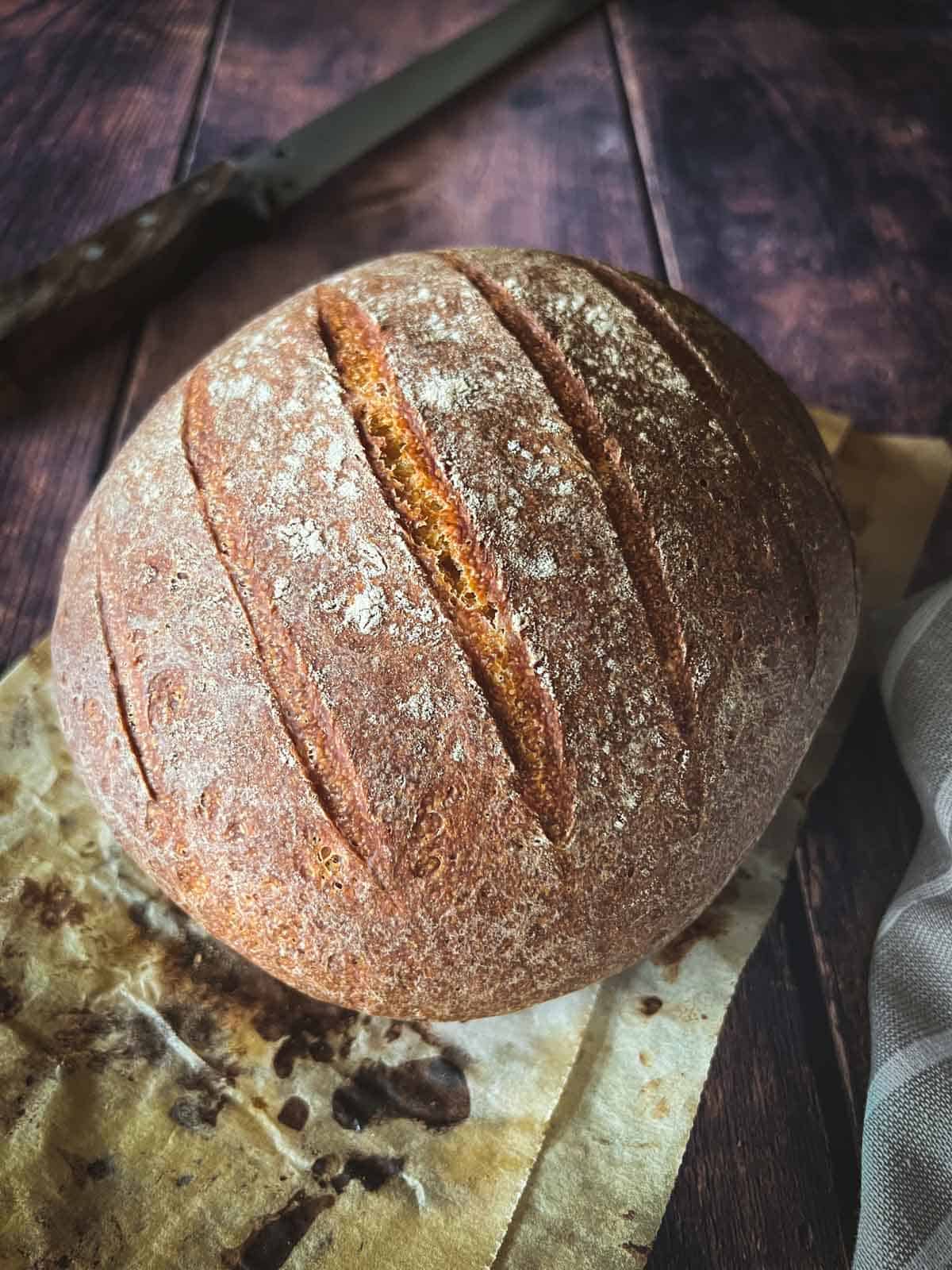
It is a traditional Pugliese bread loaf typical of Puglia but is loved and appreciated throughout Italy. It can be made with fancy durum flour, plain flour, or wheat semolina bread.
It has a deep golden brown color, a lightly floured surface, a crunchy crust, and a thick and soft inside.
Traditionally, it is also made of substantial sizes, up to 2-3 kg, but we like to make a relatively medium one because using the same flour to make smaller round rolls takes less cooking time.
🧾 Ingredients
The original recipe calls for a few Italian ingredients as follows
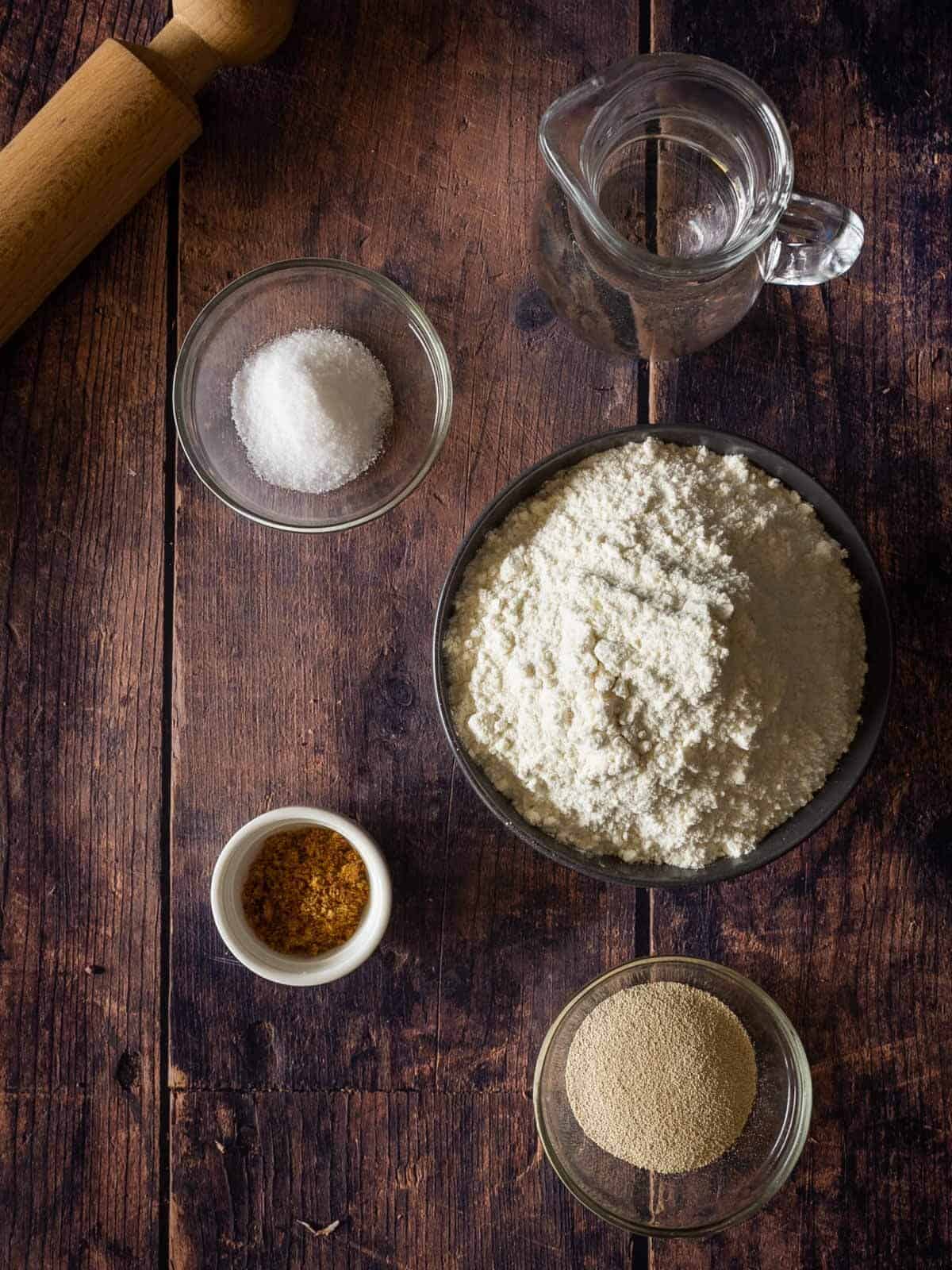
- Type 0 Bread Flour or All-purpose flour plus some to adjust: Flour is the main ingredient in bread and provides structure and texture to the loaf. Type 0 bread flour is used for a denser, chewier texture, while all-purpose flour is used for a lighter, softer texture.
- Brewer’s yeast: active dry yeast is used as a leavening agent, causing the bread to rise and creating air pockets in the crumb.
- Olive oil is added to the dough to enhance the flavor and texture of the bread, giving it a rich, nutty flavor and a tender crumb.
- Lukewarm Water is used to hydrate the dough and activate the yeast, helping the bread to rise.
- Brown sugar is used to feed the yeast, providing the necessary sugar for fermentation and helping to create a flavorful crust.
- Salt enhances the bread's flavor and regulates the fermentation process. It allows the bread to rise properly and prevents the dough from becoming too sticky.
Notes on ingredients
Although you can use fresh yeast, we prefer Italian dry yeast to reduce the proofing time, and we love the flavor.
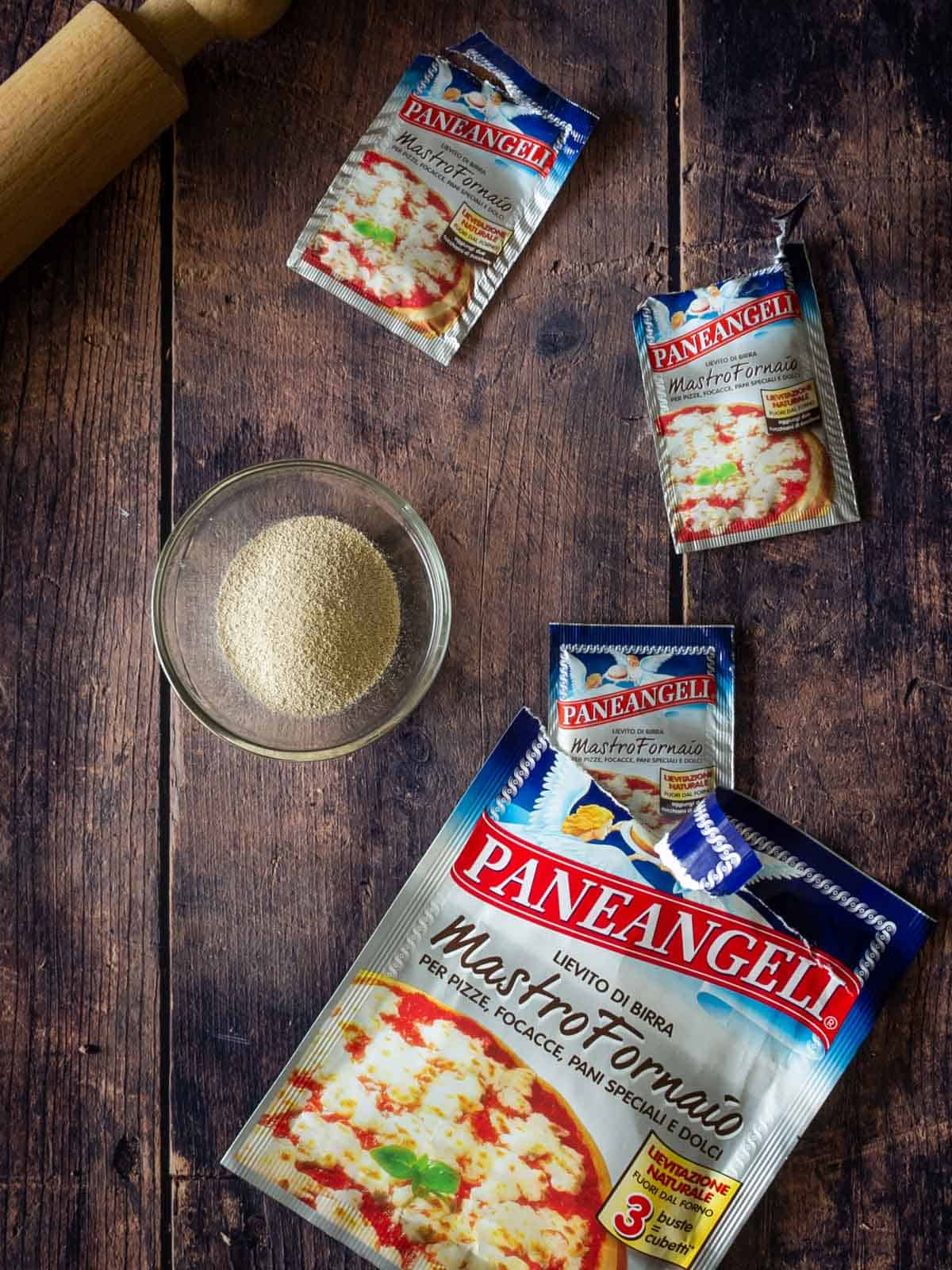
Brewer's yeast is often demonized. However, few people know that these microorganisms have many beneficial effects on our bodies, including hair, nails, skin, and metabolism.
One of the secrets of good homemade bread is the choice of flour, which must be of excellent quality. Soft wheat is generally the most used flour, but alternatives are not lacking. Each has its own particular flavor and different nutritional characteristics.
Soft wheat flour is white in color and chalky in consistency. It is classified into types "00" (the most common), "0", "1", "2", and wholemeal.
So, a Type "0" flour calls for a long fermentation period.
Then, there are durum wheat flours, used not only for preparing pasta but also for particular bread.
🍽️ Equipment
Large bowl and baking sheet.
🔪 Instructions
Measure your ingredients carefully.
Hint: you can use measuring cups, but in baking, it is best to weigh your ingredients using a kitchen scale.
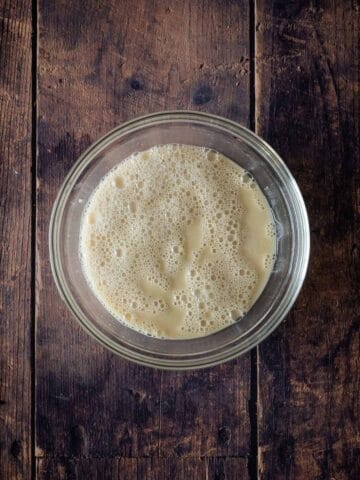
Step 1: Dissolve the dry instant yeast in lukewarm water with sugar and let it rest for 5 minutes.
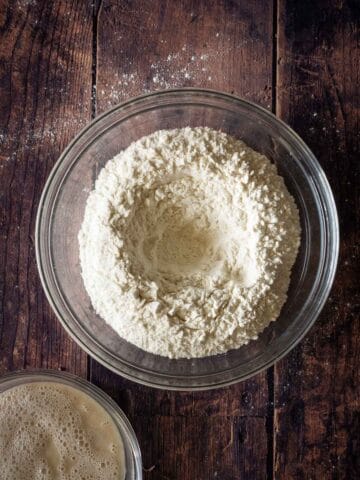
Step 2: In a large bowl, toss the flour and make a whole in the flour.
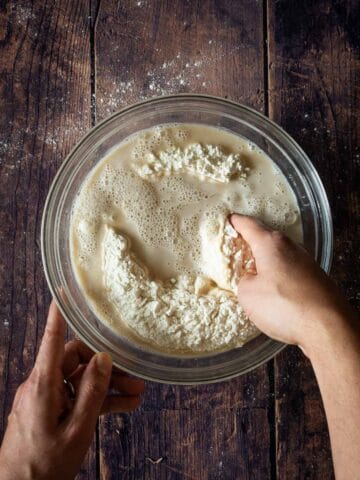
Step 3: Mix the flour with the yeast water to knead the bread loaf dough.
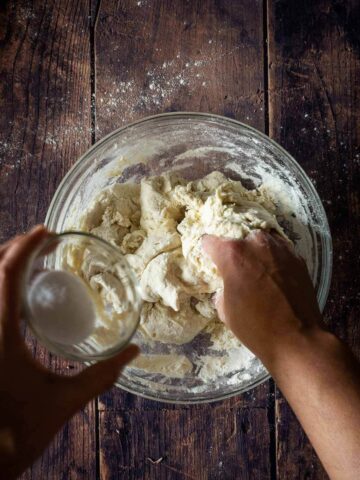
Step 4: Add salt and scatter it evenly in the bread dough, kneading until smooth. If the dough sticks too much to your hands, use extra flour.
Baker's tip: salt is an enemy of the yeast; that's why you should avoid direct contact and why we don't add it together with the rest of the ingredients. Also, remember to beat the dough several times on the work surface to activate the gluten-creating folds and pull the dough's edges toward the loaf's center.
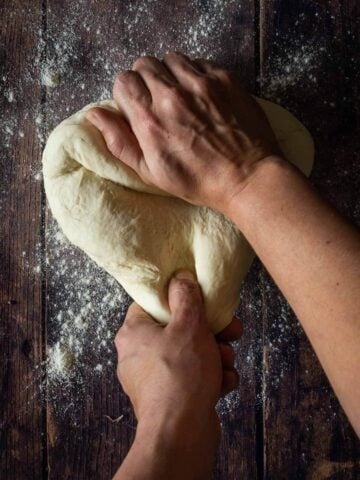
Step 5: Stretch the bread dough for ten minutes.
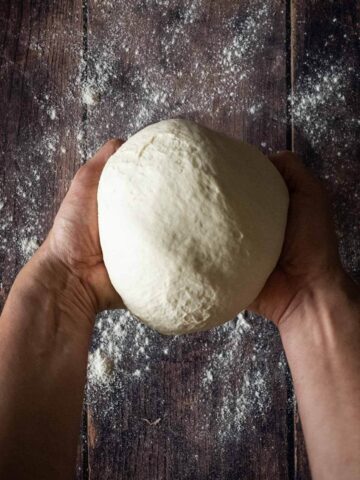
Step 6: This is the first proofing (rise). Form a ball, arrange it in a tray, and oil the surface with olive oil.
Note: You can use a stand mixer, but I prefer to knead it myself to avoid having too many dirty utensils since the kneading time is minimal.
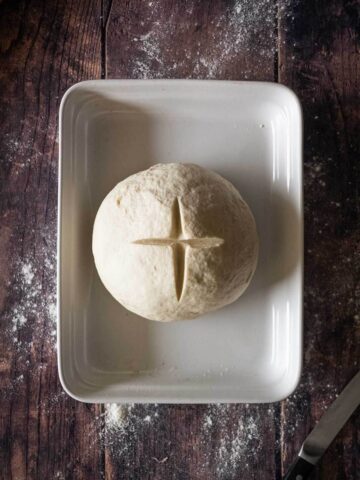
Step 7: Oil the top of the dough and then Crisscross it.
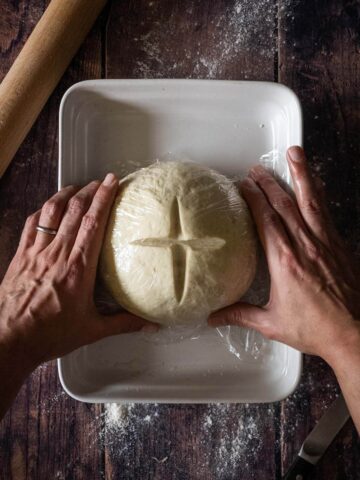
Step 8: Place dough in a greased basin, cover it with a sheet of plastic wrap, or in a bowl sealed with a moistened clean kitchen towel, and let rise in a warm place (or at room temperature if the kitchen is warm) for an hour and a half.

Step 9: Let the dough rise for one hour, covered with cling paper.
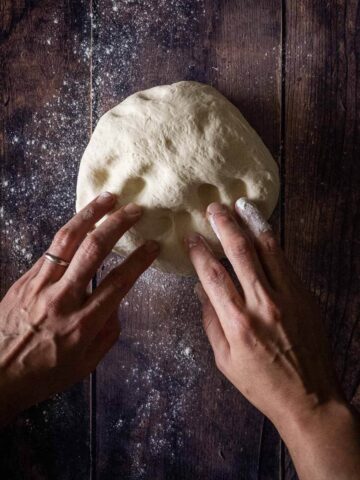
Step 10: Second proof (rise). Transfer the leavened dough onto the floured surface and deflate it slightly by pressing it with your fingers. If the dough has reached the right leavening, perfect imprints must remain in the dough.
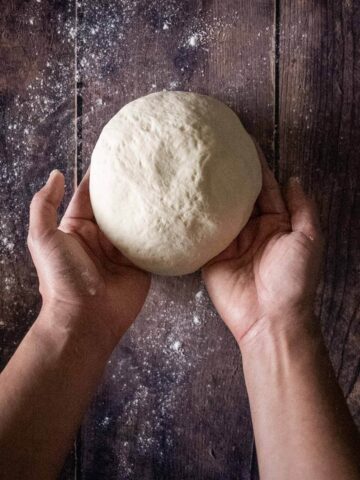
Step 11: Form a ball and pull the edges of the dough first outwards and then towards the center to form folds. Once the dough hooks, turn it upside down, smooth side up; give it a round shape to create a perfectly round ball, and shape it with your hands using a circular motion.
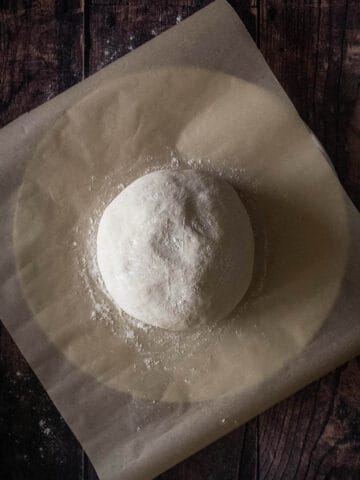
Step 12: Transfer the loaf to a baking sheet lined with parchment paper (or a baking stone), cover it with plastic wrap, and let it rise for 45 minutes.
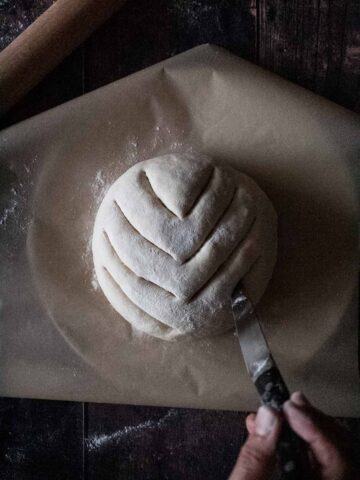
Step 13: Cut it on the surface with a cutlet, lightly flour it, and bake it in a preheated oven at 450 ºF (230 ºC) for 30-35 minutes until you see a deep brown crust forming.
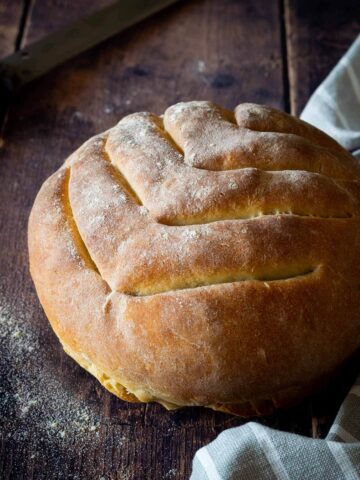
Step 14: The crispy crust is ready when the bread looks golden brown! Remove it from the oven and rest for at least ten minutes.
💡 Expert tips
Optimal baking: Put a saucepan of hot water on the bottom of the oven while you preheat it and create steam during cooking to obtain optimal bread baking.
Don't open the oven during the baking process. It is essential to keep the temperature constant. If you note that the time elapsed is less than 30 minutes, it already looks dark brown; reduce heat (10-20 degrees).
The aroma of freshly baked bread is irresistible, and we often find ourselves eager to slice into it right away. However, it's essential to exercise patience and let the bread cool appropriately before cutting into it. Here are a couple of reasons why:
- Retains Moisture: Allowing the bread to cool helps retain its moisture. Cutting into hot bread releases steam, which can dry out the crumb, leaving you with a less tender interior.
- Improves Texture: As the bread cools, the crumb continues to set and firm up. This process enhances the texture, giving you a chewy and well-structured interior that's characteristic of good artisan bread.
- Enhances Flavor: Cooling allows the flavors to develop fully. The residual heat helps meld and improve the complex flavors developed during fermentation and baking.
- Easier to Slice: Cooled bread is easier to slice neatly. Hot bread can be gummy and difficult to cut, leading to squished and uneven slices.
- Crust Integrity: Letting the bread cool ensures the crust remains crisp and intact. Cutting too soon can cause the crust to become soggy as moisture escapes.
📖 Variations
Feel free to add any herbs, tree nuts, or ground garlic if you like; one to two teaspoons is enough to infuse some flavor.
🥢 How to serve
Now, the fun part! Let's run through some ideas to serve your freshly baked masterpiece! 🙂
Breakfast
We love serving this Pagnotta bread for breakfast with blueberry marmalade and vegan butter.

Dips, Sauces, and Toppings
We also use this bread to make avocado toast, using our homemade guacamole recipe. To make it extra yummy, we put a portion of our seared vegan oyster mushroom recipe on top.

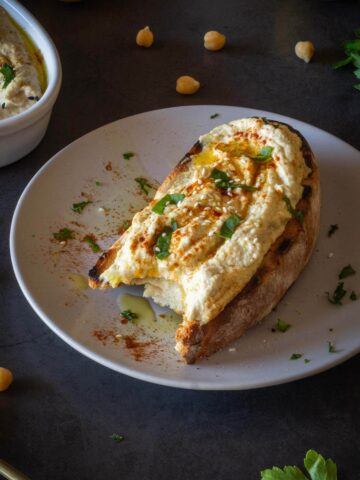
You can also have this bread as part of a vegan charcuterie board with spiced onions and spreads like Lebanese hummus, bell pepper Muhammara, Roasted red pepper hummus, carrot top chimichurri sauce, and a green goddess dip.
The famous naturally vegan Escalivada and Italian pickled eggplants are great pairing options for your homemade bread loaf.
We also love using it to make bruschettas with artichokes spreads and charred cherry tomatoes or soak the leftover juices of Roman-style artichokes with a chunk of this bread.
Soups
Consider pairing it with our mushroom soup without cream, Tuscan white bean soup, or our Greek white bean soup for a comforting and hearty meal.
We also love using loaves to make Bread Bowls (also known as Panne Cook, taking some of the inside dough and filling it with any stew.
🥡 Storage
You can store it at room temperature for two days or freeze it in a bag or an airtight container, sliced or whole.
To thaw, leave it in a refrigerator or at room temperature overnight or in the microwave.
We like slicing it and briefly toasting it in a skillet, oven, or electric toaster before consuming it, as the texture and consistency will be at their best.
❓ FAQ
It is defined as bread that is crafted rather than mass-produced. Baked in small batches rather than on a vast assembly line, artisan bread is often made by hand with traditional methods and high-quality ingredients. These breads don't contain preservatives, resulting in a fresher and more natural taste. Also, this type of baking involves a longer fermentation than commercial bread, which helps to develop a more complex flavor. The term "artisan" signifies the skill, time, and craft of creating each loaf.
No, it is not, as Pagnotta bread can be made with instant yeast, but you can make a pagnotta with sourdough starter or even a mix of rapid and sourdough starter.
I love playing with yeasts, and I love the results I have gotten by replacing one-third of the suggested rapid yeast with a tablespoon of my sourdough starter diluted in the same rapid yeast mix.
French and Italian bread, while both delicious, have distinct characteristics that set them apart.
French bread, as governed by French bread law. This law mandates that traditional baguettes must be crafted on-site where they're sold and are permitted to contain only four ingredients: wheat flour, water, yeast, and salt. The use of additives, preservatives, or freezing techniques is strictly prohibited. As a result of these stipulations, baguettes maintain a fresh, authentic taste but also have a relatively short shelf-life, typically going stale within a day.
The most iconic French bread is the baguette, characterized by its long, thin shape and crispy crust. French bread has a light, airy interior with large holes, known as the "crumb," and a crispy, thin crust. It's typically baked in steam-injected ovens to achieve that signature crust.
On the other hand, Italian bread has a bit more variety in ingredients and shapes. While it also uses the basic ingredients of flour, yeast, water, and salt, many Italian bread recipes also include olive oil or milk, which gives the bread a softer texture and richer flavor. Italian breads, like Ciabatta and Pagnotta, are often round or flat and have a denser crumb with smaller holes than French bread. The crust of Italian bread is generally thicker and chewier than French bread's.
🍞 More dough and bread recipes
Curious to learn more about kneading and doughs?
Argentinean Lentil-based vegan empanadas with homemade vegan empanada dough.
Vegan bread buns: perfect for your end-of-year holiday gatherings.
This recipe also works for pizza crusts (check our Basic Pizza recipe and the Marinara Pizza recipe for more Italian dough goodness ); after all, it is Italian! 🙂
And for even more recipes, join our Facebook Fan Page for support, inspiration & fun!
⭐ If you try this recipe, let us know! 💬 Leave a comment, rate it, and don't forget to tag us @ourplantbasedworld on Instagram. Cheers!
🎥 Video
📋 Recipe
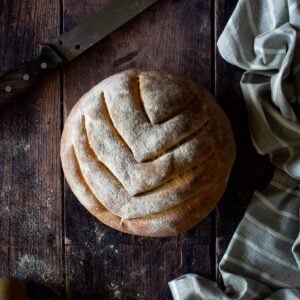
Italian Artisan Bread (Pagnotta)
Equipment
Ingredients
- 17 ½ ounces flour 0 or All-purpose flour plus some to adjust and dust the working table
- 9 ½ fluid ounces water lukewarm
- 4 ½ teaspoons brewer’s yeast (dry yeast)
- 2 ¼ teaspoons brown sugar or powdered barley malt, or molasses
- 2 ½ teaspoons salt
To oil the baking tray
- 1 teaspoon olive oil extra virgin
Directions
- Dissolve the yeast in warm water and the sugar (you have to be very careful not to overheat it, or it may kill the microorganisms). Let it rest for 5 minutes.
- In a big bowl or kitchen table, mix the flour with the yeast mixture and knead roughly with your hands, stretching holding one tip of the dough. Slam the dough ball on the table every couple of minutes to activate the gluten. Incorporate the salt, and knead well for 10 minutes.
- First proofing. Oil the surface of the dough ball, make a cross with a knife and cover with plastic wrap. Reserve in a warm place in your kitchen or close to a heater. Let the dough be proof for 1 hour.
- Second proof and shaping. After the time has elapsed, stretch the edges of the dough first outwards and fold inwards to the center. Put the dough upside down and give the ball a round shape pushing the downer parts of the ball with your fingertips. Cover with the same oiled plastic wrap and let the dough proof for another 30 minutes. After 15 minutes, Pre-heat the oven to 480 ºF or 250 ºC.
- Prepare the dough for baking. Place the dough on a round or edgeless baking tray with parchment paper. Sprinkle some flour on top with your fingers and score the dough with the tip of a sharp knife. You only need to cut the surface. Do not go too deep.
- Adjust the temperature. Decrease the oven temperature to 445º F (230 °C). Place an oven-resistant container with 1 cup of water on the oven floor.
- Bake. Put the baking pan in the oven and bake for 25-30 minutes (until the bread looks golden brown).
- Allow the bread loaf to rest about 10 minutes before cutting it.
Video
Notes
Nutrition Facts
Nutritional Disclaimer
The information shown is an estimate provided by an online nutrition calculator. It should not be considered a substitute for a professional nutritionist's advice. See our full Nutritional Disclosure here.
Affiliate Disclaimer
Please note that some of the links here are affiliate links, and I will earn a commission if you purchase through those links. I recommend all of the products listed because they are companies I have found helpful and trustworthy.
As the lead content writer and recipe developer at Our Plant-Based World, he combines his passion for health and sustainability with a Plant-Based Nutrition Certification to create accessible, delicious vegan recipes. His expertise in plant-based cooking supports the blog's mission of fostering a healthier, environmentally conscious lifestyle through simple and seasonal dishes. His commitment to making vegan cooking enjoyable and inclusive for everyone shines in each recipe and article.

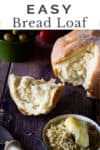
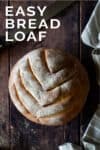
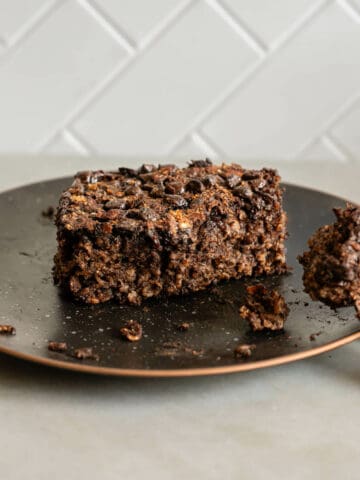
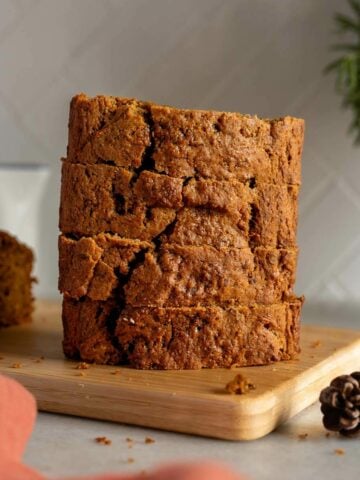

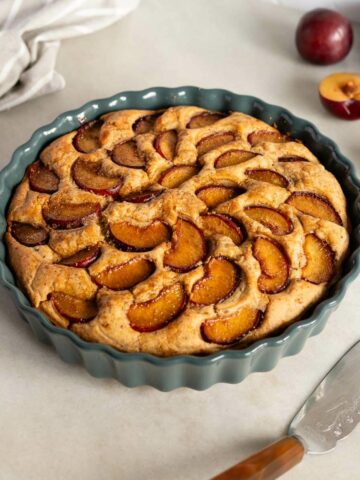

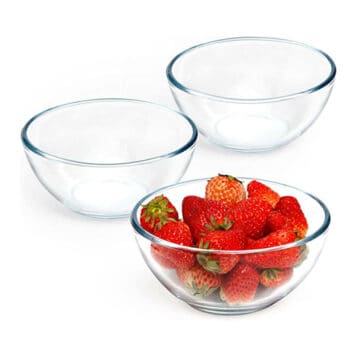
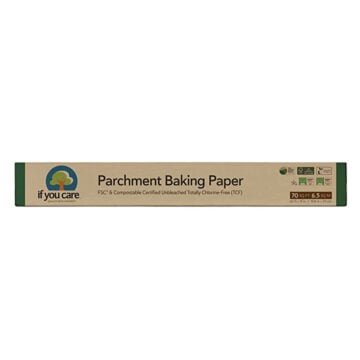
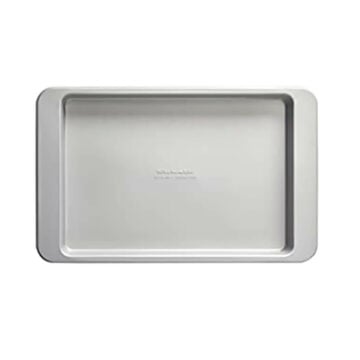

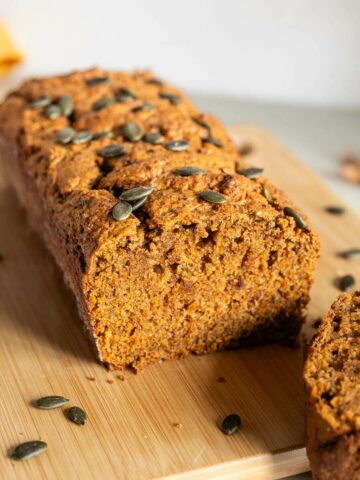
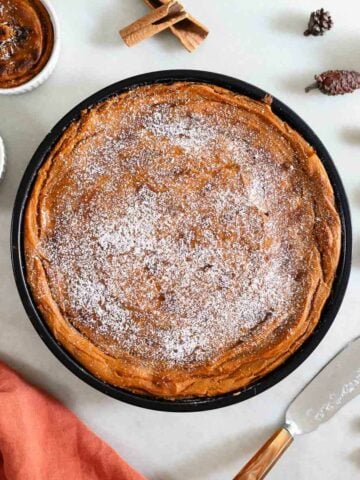
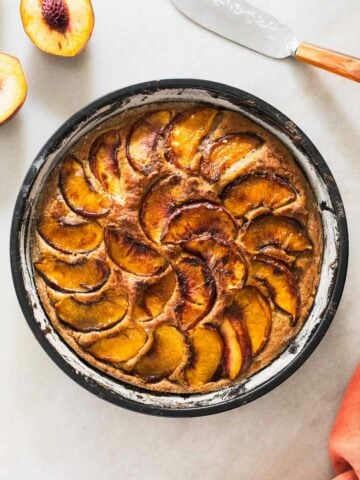
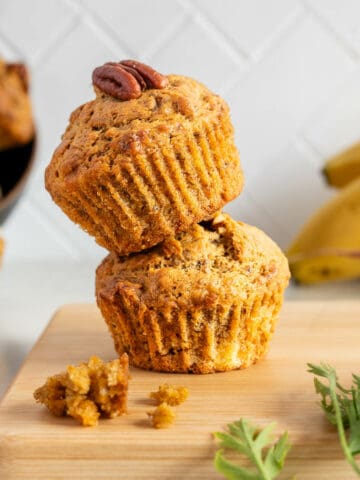
Buziak Angel
I’m from Canada. Can I use regular yeast? I don’t bake a lot so I’m not even sure where to get brewers yeast. Will the bread taste the same with yeast like “Fleischmans”?
Also, is there a specific brand of flour that you use?
Gus
Hi Buziak, in Italy we usually use Paneangeli (the picture is in the Recipe Notes). When in the USA I use instant Fleischmans dry yeast. IF using regular yeast: Active dry yeast = ⅓ dose of fresh yeast
I like using King Arthur's Bread Flour when in North America, it works great. In Italy I use Barilla or Caputo Flour "0".
Let us know how it goes!
Lisa
I have not had success with this recipe. My dough is always too wet to properly kneed. It's sticks to my fingers like crazy. As suggested I add a little flour so this doesn't happen. I haven't been getting any impressive rise. It seems okay after the first prove though. Then it goes flat and dense in the oven 🫤. I am definitely an amateur but I can't figure out what's going on.
Gus
Hi Lisa,
Sorry to hear that. Can I ask what white type of flour and yeast you use? That usually makes all the difference. Also, let me know if you have read the tips on the post, to make sure I can better assist you.
Best,
Gus
Anjali
This recipe really was so easy to make! I've never made bread from scratch at home and this turned out perfectly!
Gus
Hey Anjali, I am glad you liked the recipe! This is our go-to homemade bread! Never fails!
Anaiah
Wow! I love how easy to make this bread is and how minimal the ingredients are. This is going to be a new staple in our home!
Gus
That's cool Anaiah! This bread is our go-to bread staple at home!
nancy
the step by step instructions are really helpful! thanks for all the tips
Gus
You are welcome, Nancy!
Maiko
When I bake bread I kind of go with the flow and have never thought of the type of flour I use or anything, thanks for the thorough guide! I will try making this Italian bread recipe next time I bake bread.
Gus
you are welcome, Maiko! I am glad you liked the guide. Let us know how your Italian bread turns out!
Michelle
One of my goals is to make more bread this year, so this is perfect!!
Jacqui
Exactly the recipe I needed! This bread turns out so flavorful and delish.
Gus
that's very cool, Jacvqui! Thanks for the feedback!
Andrea
love this bread recipe so so much! so good!
Shilpa
Freshly baked bread is always the best. Thanks for this super easy recipe.
Gus
You are welcome, Shilpa!
Kayla DiMaggio
Loving this easy bread loaf! It was so delicious and you are right, so easy! I will be making this all the time!
Gus
Thank you for the feedback, Kayla! We are glad you enjoyed this recipe! We are fans!
Shadi Hasanzadenemati
This was amazing and such a treat! Thank you!
Gus
We are glad to hear it was a hit! thanks for your review!
Kristen
This beautiful bread turned out perfectly! Thanks so much! 🙂
Toni
It turned out really good! My family loved it! Thanks!
Gus
Super! Thank you for letting us know! We appreciate it!
Claudia Lamascolo
I love how easy this is and Artisan is our favorite!
Elaine Benoit
Wow, wow, WOW! The texture of this bread is out of this world! What a great recipe which I will be making again!
Gus
I am glad you enjoyed it, Elaine! It is always good to have a keeper bread recipe handy!